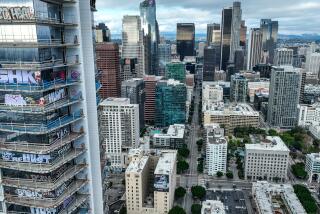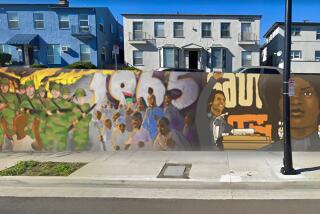Murals reflect artist, owner
- Share via
“I’VE always said that there’s something inherently selfish about leaving every wall completely white,” says interior designer Jarrett Hedborg, whose clients include Jack Nicholson, Jeff Bridges and “Deadwood” creator David Milch. “I call it the tyranny of the white wall, which is something that is so distinctly American.”
For Hedborg and others, the wall painting is one solution. But what kind?
The term mural simply means anything painted directly on a wall -- indoor or out. Most muralists like to differentiate their work from faux painting or decorative painting, which often gives the impression of age (think faux cracks in the walls), or trompe l’oeil, in which gardens, window vistas or even doorways are painted to fool the eye and look real.
Prices vary greatly, but a large interior wall painting can run $10,000 to $30,000, depending on size and detail.
Commissions for contemporary artists are less common. They tend to be more expensive and prone to the artist’s whims. Many artists add 25% to their usual fee for site-specific home commissions.
Protection and transportability are also important issues, especially for people who move often.
Many collectors like to have their commissions created on panels or canvases that are then inset into walls. This approach allows the works to be transferred to new residences (or sold separately).
Commissions can be exceptionally fragile. Artists like to tell the story of a Sol LeWitt piece installed on the wall of a Los Angeles collector’s house a few years ago. The owner had a party and a section of the mural was erased when guests leaned their derrieres against the wall.
-- Paul Young


